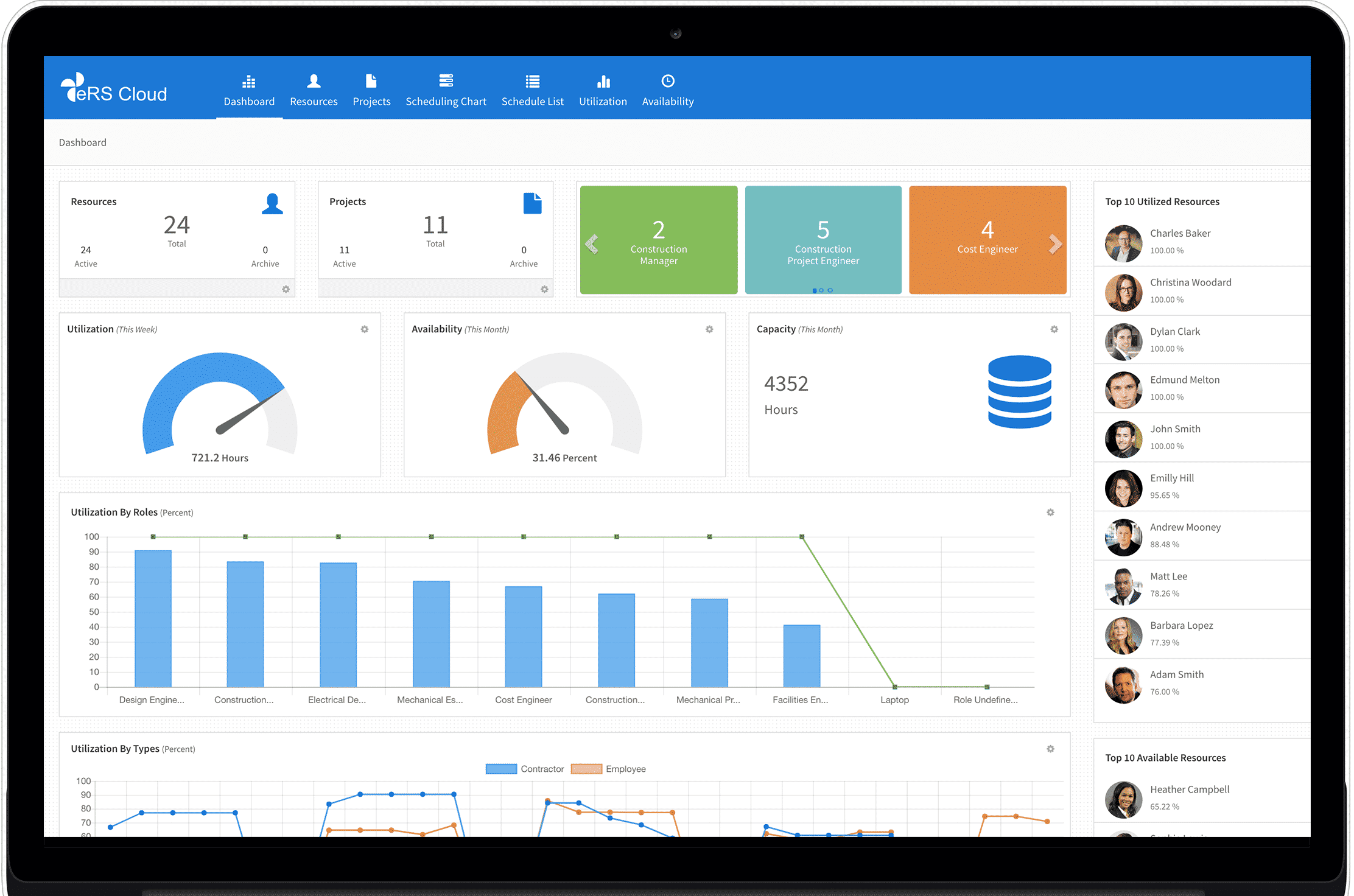In today’s fast-paced business environment, efficient management of resources is essential to ensure that projects are completed on time and within budget. Resource scheduling software helps organizations optimize the allocation of their workforce, equipment, and other resources by providing a structured way to assign tasks, monitor progress, and prevent overallocation or underutilization. These tools are essential for project managers aiming to enhance productivity, improve collaboration, and manage workloads effectively.
What is Resource Scheduling Software?
Resource scheduling software is a digital tool that enables organizations to assign resources to tasks, track availability, and manage workloads efficiently. It provides real-time insights into who is doing what, helping project managers plan and adjust schedules dynamically. These tools are commonly used in industries such as IT, construction, marketing, consulting, and healthcare.
Why is Resource Scheduling Important?
-
Maximizes Resource Utilization – Ensures that resources are allocated efficiently without being overburdened or idle.
-
Prevents Scheduling Conflicts – Identifies and resolves double bookings and overlapping tasks.
-
Reduces Project Delays – Optimizes task assignments to ensure deadlines are met.
-
Improves Team Collaboration – Provides visibility into team schedules and workloads, enhancing communication.
-
Enhances Decision-Making – Offers data-driven insights to improve resource planning and allocation.
Key Features of Resource Scheduling Software
-
Drag-and-Drop Scheduling
-
Allows users to easily adjust schedules and task assignments.
-
Facilitates dynamic changes to project timelines.
-
-
Real-Time Resource Visibility
-
Provides a clear overview of resource availability and workload distribution.
-
Helps prevent overallocation and identifies underutilized resources.
-
-
Capacity Planning and Forecasting
-
Estimates future resource requirements based on ongoing and upcoming projects.
-
Ensures resource availability by predicting bottlenecks in advance.
-
-
Task Prioritization and Dependency Management
-
Allows prioritization of critical tasks to meet project deadlines.
-
Manages task dependencies to avoid delays in task execution.
-
-
Automated Notifications and Reminders
-
Sends alerts about approaching deadlines and changes in task assignments.
-
Keeps team members informed of their responsibilities.
-
-
Time Tracking and Reporting
-
Tracks the time spent on each task to ensure accurate project billing.
-
Generates insightful reports to analyze performance and resource utilization.
-
-
Integration with Project Management Tools
-
Seamlessly connects with other project management platforms such as Asana, Jira, or Trello.
-
Enables a unified approach to project planning and execution.
-
Types of Resource Scheduling Software
-
Standalone Resource Scheduling Tools
-
Focuses exclusively on resource allocation, scheduling, and workload management.
-
Ideal for agencies, consultancies, and service-based industries.
-
Example: Resource Guru, Float
-
-
Project Management Software with Resource Scheduling
-
Combines project management features with robust resource scheduling capabilities.
-
Suitable for managing complex projects across different teams.
-
Example: Microsoft Project, Smartsheet
-
-
Enterprise Resource Planning (ERP) Systems
-
Provides an integrated approach to managing business processes, including resource scheduling.
-
Best for large enterprises that need centralized control over multiple business functions.
-
Example: SAP, Oracle ERP
-
Top 5 Resource Scheduling Software in 2025
-
Resource Guru
-
User-friendly interface for scheduling team members, equipment, and meeting rooms.
-
Provides real-time availability and workload tracking.
-
Ideal for small to medium-sized businesses.
-
-
Float
-
Visual resource scheduling platform with drag-and-drop functionality.
-
Offers forecasting, time tracking, and capacity management.
-
Perfect for creative agencies and service-based companies.
-
-
Microsoft Project
-
Comprehensive project management and scheduling solution.
-
Integrates with Microsoft 365 for seamless team collaboration.
-
Suitable for large-scale project management.
-
-
Smartsheet
-
Combines spreadsheet functionality with advanced scheduling features.
-
Allows real-time collaboration and task automation.
-
Ideal for enterprises managing multiple projects simultaneously.
-
-
Mavenlink (now Kantata)
-
Provides professional services automation (PSA) with resource planning and project accounting.
-
Ideal for managing teams, budgets, and schedules in one place.
-
Suitable for consultancies and project-based organizations.
-
Benefits of Using Resource Scheduling Software
-
Increased Efficiency – Automates manual scheduling processes, saving time and reducing errors.
-
Better Resource Utilization – Balances workloads and prevents burnout or idle time.
-
Enhanced Collaboration – Improves communication between teams and stakeholders.
-
Improved Forecasting – Enables accurate prediction of resource needs for upcoming projects.
-
Cost Optimization – Helps reduce operational costs by avoiding underutilization and overutilization.
How to Choose the Right Resource Scheduling Software
-
Evaluate Your Business Needs – Consider your industry, team size, and project complexity.
-
Look for Scalability – Choose a platform that grows with your organization.
-
Prioritize Ease of Use – Select a tool with an intuitive interface to reduce the learning curve.
-
Check Integration Capabilities – Ensure the software integrates with existing project management and CRM platforms.
-
Consider Budget Constraints – Balance features with cost to achieve the best return on investment (ROI).
Conclusion
Resource scheduling software plays a crucial role in helping organizations manage their resources effectively, prevent scheduling conflicts, and improve overall efficiency. With features like real-time tracking, automated notifications, and capacity planning, these tools empower businesses to optimize workflows and meet project deadlines. By selecting the right software based on business needs and project requirements, organizations can achieve higher productivity and cost efficiency


